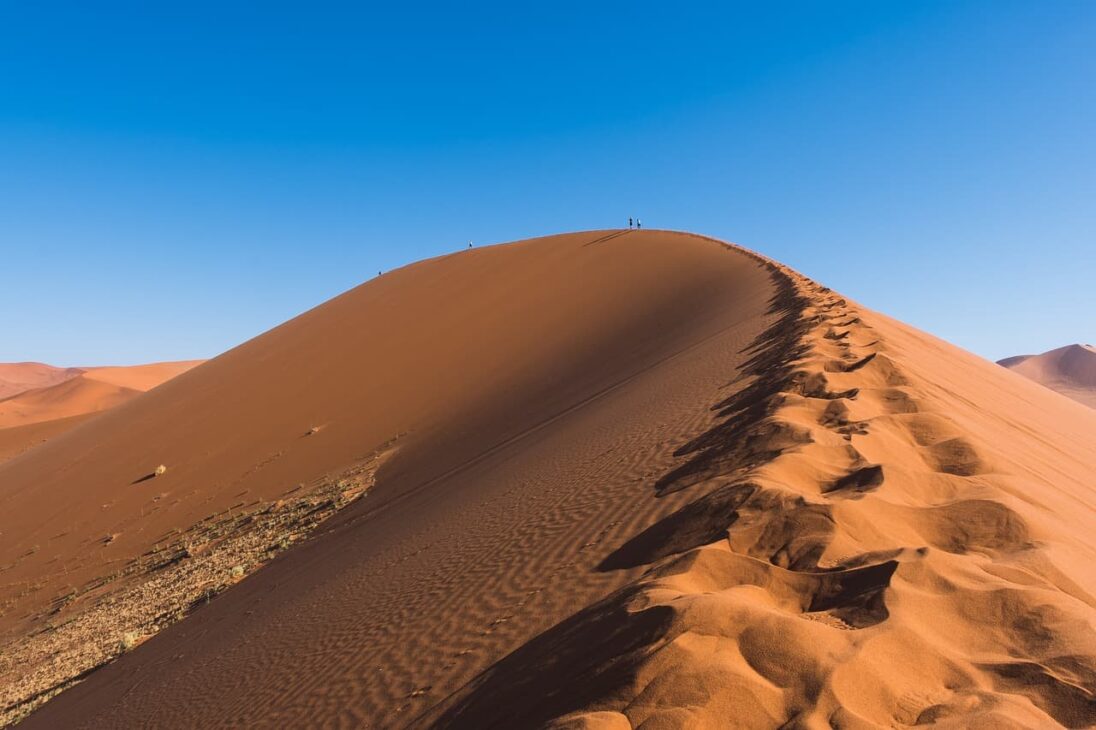India is a country worth discovering, many travelers consider it one of the most magical in the world due to its beauty and spiritual influence.
For travelers seeking spiritual sustenance, India offers an abundance of sacred sites and moving philosophical epics, while history buffs will stumble upon gems of the past almost everywhere, from the majestic remains of the British Raj that dominate the spice markets with their quiet gleam to the decaying forts perched on the edge of steep escarpments. Tourists looking for outdoor thrills can sail the sparkling waters of one of the many quiet bays, hunt big cats on an exciting jungle animal safari, or simply breathe in the piney air on a meditative walk through the forest.
Best time to visit the country
The climate of India
To best organize your trip to India, it’s important to know the country’s climate and temperature based on each season and region you want to visit, figuring out when to go during the best period. In fact, the climate in India can affect our travel experience in several ways. This country has a monsoon season with heavy rains that can also lead to very heavy rainfall, making travel almost impossible. However, in summer, temperatures in some regions can even exceed 40°C. In addition, in India, based on the territory, we can find any type of climate.
In the northern part there is a subtropical, which becomes tropical in the center, south of the tropic of Cancer. Monsoons determine the rainy and dry seasons. The rains last from July to September, except in the south, where they can last until December. In addition, the area south of the Himalayas is considered one of the rainiest in the world, while the northwest has an arid climate. The period with the highest temperatures lasts from April to June, before the monsoon, with more heat in the interior. January and February are generally dry across India, except in the mountains where it snows. The Bay of Bengal region can be affected by tropical cyclones from April to December.
Mountain climate
On the highest peaks of the Himalayas we find an alpine climate. In addition, as you go up in altitude, the temperature decreases depending on the slope, higher on the southern and lower on the northern and interior. The same applies to precipitation, which is low in the interior, especially towards the arid Ladakh plateau. On the other hand, on the Himalayan slopes, especially on the western slopes, precipitation occurs in winter. At an altitude of 1500 meters, in the area of Kashmir and Jammu, the climate becomes continental: dry and sunny in autumn with an annual monsoon. Winters are rainy, with frequent frosts and snow. Spring is rainy, but without excesses, due to the Mediterranean unrest.
In the Kashmir region, above 3000 meters, winters are cold and snowy in the west, while the climate becomes desert-like in the interior of the plateau. Furthermore, at an altitude of 1400 m, in the Sikkim area, the average temperature can be as low as 8°C in winter and rises to 20°C in summer, with daily summer monsoon rains and little sunshine. Moving on to the West Bengal area, above 2000 m, temperatures reach 17°C in summer and this place was particularly loved by settlers in summer, despite being rainy and winters being dry and sunny.
Indo-Gangetic climate
South of the Himalayas we find the vast Indo-Gangetic plain, from which the Bay of Bengal is excluded, where the climate is subtropical. Winters are cool with average temperatures ranging from 10°C in the north to 15°C in the south. Nights are cold, even down to 0°C, and fog is common in the morning. In addition, from October to February, the level of pollution in the area is very high. The monsoon lasts from March to June. Rising temperatures cause frequent storms and high humidity.
Rains, especially in the southeast, can be frequent, alternating between dry and hot periods. In the capital New Delhi, winters are mild, and before the monsoon, from May to June, this is the warmest period. In Agra, the temperature rises, and precipitation falls in the same way, in the foothills of the Himalayas it becomes more. In Jammu, far to the north of the plain, there are Mediterranean disturbances in spring and winter.
Arid and desert climate
Moving towards the border with Pakistan, to the northwest, India’s climate becomes arid from Rajasthan to Gujarat and the Aravalli Mountains. In this area, the monsoons are short, from June to September or less, and with little rain. The Thar Desert has a desert climate, there is no vegetation among the sand dunes, and sandstorms are frequent from March to June. The maximum temperature recorded in this part of India is 51°C. In Rajasthan, winters are sunny and warm, much more so than in New Delhi, and the maximum temperature reaches 48°C in summer, before the monsoon.

After the monsoon, the temperature drops, making it an ideal time to travel to this area of India from December to February. However, it is important to remember that monsoons are not regular, especially in the northwestern part of the country. In the east, however, we find a semi-arid climate and a landscape with little vegetation. However, during the monsoon, rainfall can be abundant. Moving to the Aravalli Mountains in Jaipur, the capital of Rajasthan, the rains are more plentiful.
Humid climate
Moving to the northeast, India’s climate becomes humid and winters are dry and mild with temperatures around 20°C. On the other hand, the monsoon rains are very heavy and the period lasts longer, from June to October. The unstable temperatures can also lead to frequent thunderstorms on the mountain slopes. In the Kolkata area, due to its proximity to the sea, winters are mild, with an average temperature of 19°C. However, summer temperatures can reach 40°C. In May, the first monsoon rains begin. The sea has a pleasant temperature all year round. In the Brahmaputra Valley, rains are always frequent and at an altitude of 1300 m from Cherrapunj in Meghalaya we find the rainiest place in the world, especially from May to September.
Southern climate
The climate of India in the central-southern part up to the Deccan, due to the altitude, is temperate. Going down, the winters become warm, and towards the mountains and heights of the Ghats, the climate is tropical with an average winter temperature of 20°C, which partially blocks the summer monsoon, reducing rainfall from June to September. The temperature in this area of India rises from March to May, preceding the monsoon, and the amount of rainfall during the summer is the same as in the north. Towards the capital of Telangana, Hyderabad, at an altitude of 500 m, the winter temperature is around 30°C, anticipating heat in the Andhra Pradesh region as temperatures rise.

In May, the storms that precede the monsoon begin, which then arrive weakly until August, when the humidity is high and the skies are often overcast. Further south, towards Bangalore, the heat also decreases due to the altitude and the summer and autumn monsoons are present, albeit slightly. However, the southeast is also affected by the returning monsoon, especially on the coast from September to December. Moving further south, around the Coromandel coast, the climate is drier and with little rainfall. While up to Kanyakumari, the southernmost tip of India in Tamil Nadu, heat is present all year round with a minimum of 30°C and with little intense rainfall and late monsoons from October to November.
Coastal climate and islands
On the west coast and islands, the climate is humid and warm throughout the year with abundant rainfall alternating with a dry season in spring and winter. Along the coast it is warm and the monsoon period is longer, but in winter the temperature is always high due to the winter monsoon rain coming from the Ghats. Towards Mumbai, the average winter temperature is 25°C, with little rain and sunny days, and the monsoon is very intense from June to October, peaking in July with always cloudy skies and a humid climate.
The Arabian Sea has ideal temperatures all year round, but on the southern coast the climate is rainy. In the direction of Dabolim, the minimum winter temperature is 20 ° C and the temperature is even higher, while in the direction of Karnataka and the beginning of the Malabar coast, the average winter temperature is 30 ° C . The first storms begin in May, and the monsoons are from June to October. In the coastal zone, the returning monsoons are also present. Moving around the islands to figure out when to go to India, the climate is hot with a minimum of 25 and a maximum of 30 ° C between March and May. In the Bay of Bengal, rains are frequent, especially from May to November, and on the southern islands even until January. Therefore, the best time to travel is from December to March.
India, the best time to travel
As we have noticed, many types of climate and temperature can be found in India depending on the territory, so it is impossible to determine the best period to travel in this country. If you want to visit the Indo-Gangetic Plain area, the best season is winter, from November to February. However, if you can only travel in summer, this is the ideal period to travel to the northwest and southeast, towards Rajasthan, where the monsoons are not yet intense.
If you want a beach vacation in India, the temperature will be optimal all year round. Spring and fall are ideal for visiting the western coastal areas. Therefore, the time from October to March is ideal for a trip to the north of India, and to the south we recommend a trip from December to February.
No matter what time of year you go, it’s always fabulous and unbeatable. Travelers not only like to travel, but also enjoy gambling with pleasure, enjoyment and fun, such as Ivibet casino https://mojapamiatka.pl/ivibet-casino/.